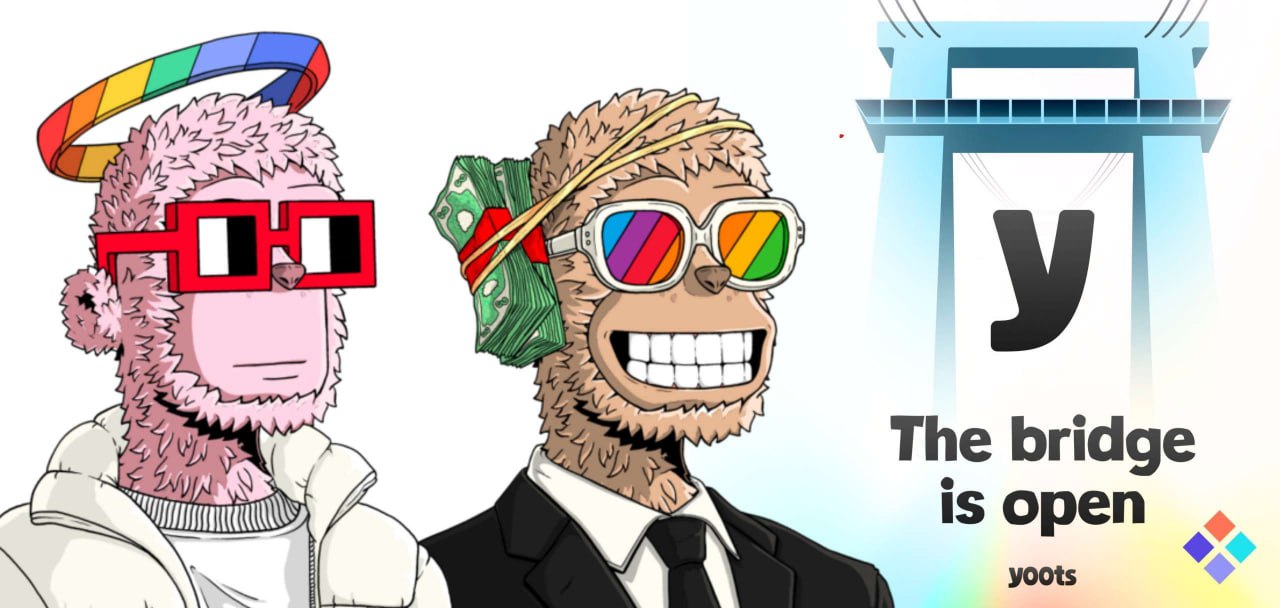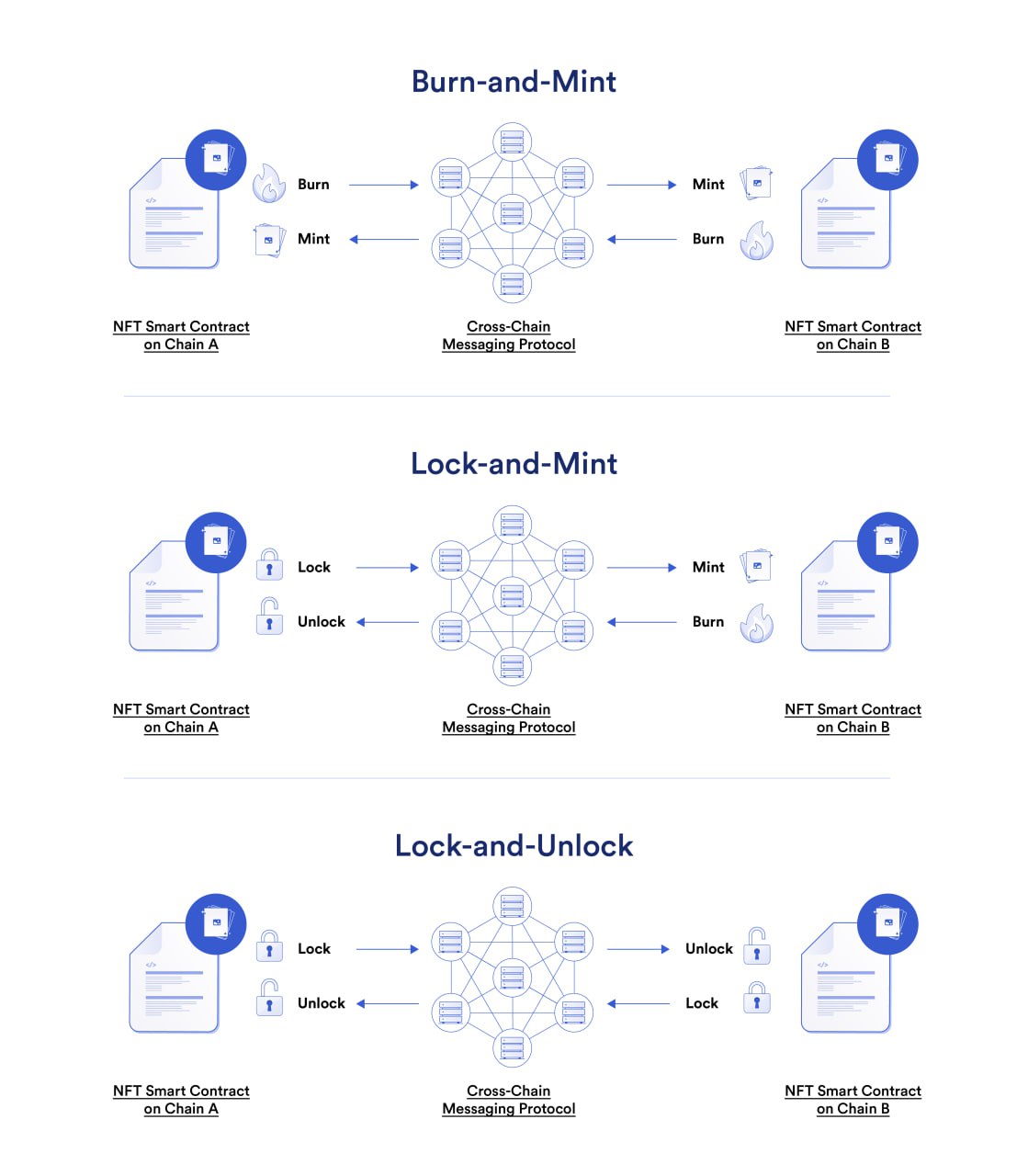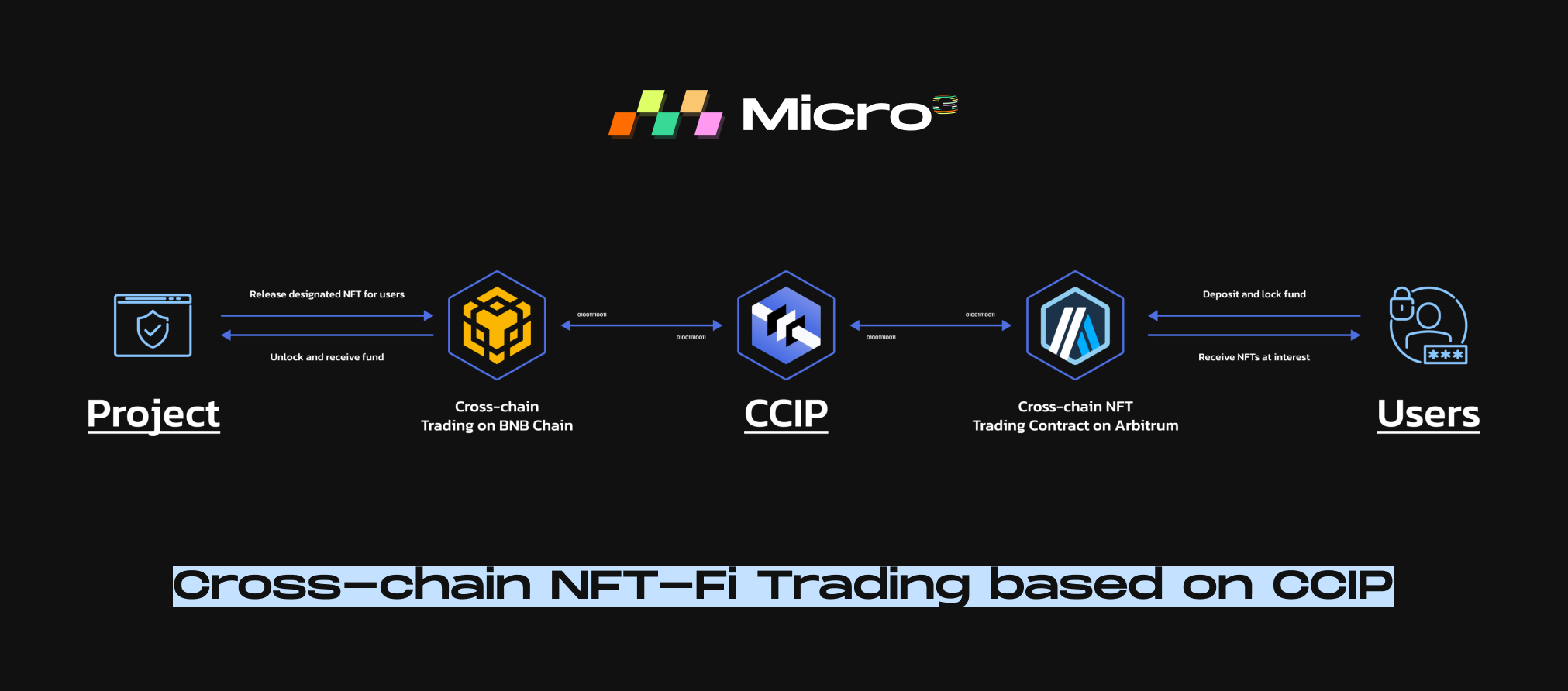In essence, a Non-Fungible Token (NFT) is a distinctive digital asset that resides on a blockchain, characterized by a unique identifier setting it apart from other tokens. This exclusivity is made possible through a smart contract, which is invariably tied to a singular blockchain network.
Consequently, current NFTs are inherently linked to only one particular blockchain. They are not transferable across different blockchain platforms, meaning that users on one blockchain cannot engage with NFTs from another unless they migrate to that specific chain. This limitation underscores the importance of the blockchain platform on which a notable NFT collection is based.
What are cross-chain NFTs?
Cross-Chain NFTs refer to Non-Fungible Tokens that transition between different blockchain networks. A prime instance is the Y00ts NFT collection, which transitioned from Solana to Polygon. This process, however, is complex. Ownership of NFTs lies with individual users post-distribution, necessitating each user's participation to move their NFT via a bridge to another blockchain.

For instance, as of a certain date, a percentage of Y00ts NFTs had transitioned to Polygon, while the rest remained on the original blockchain. These scenarios represent cross-chain NFTs, which are essentially identical tokens that exist simultaneously on multiple blockchains.
To comprehend how cross-chain NFTs function, one must understand the role of smart contracts. An NFT is managed by a smart contract specific to a single blockchain. This smart contract is vital as it dictates the parameters for NFT creation and distribution. Cross-chain NFTs, therefore, involve at least two smart contracts across different blockchains and a connection between them.
How do Cross-chain NFTs work?
Cross-chain NFTs typically employ one of three methods:
Burn-and-Mint: The NFT is destroyed (burned) on the original blockchain, and a corresponding NFT is created (minted) on the new blockchain.
Lock-and-Mint: The NFT is locked in the original blockchain and a corresponding NFT is minted on the new blockchain. To reverse the process, the new NFT is burned, releasing (unlocking) the original NFT.
Lock and Unlock: Identical NFT collections are created across multiple blockchains. An NFT is locked on one blockchain, which allows the equivalent NFT on another blockchain to be
unlocked and used, ensuring only one active instance of the NFT at any time.

These processes enable NFTs to navigate and exist across various blockchain environments, enhancing their utility and accessibility.
Micro3 Cross-chain NFTs leveraged by CCIP
By utilizing the Arbitrary Messaging capabilities of CCIP, this allows Micro3 to provide their users with access to their assets across multiple blockchains. This innovation marks the inaugural application for cross-chain NFTs, offering the ability to seamlessly integrate NFTs into users' preferred blockchain networks, essentially making the underlying blockchain infrastructure transparent to the user.

In the realm of Cross-Chain NFTFi (Non-Fungible Token Finance), the use of CCIP's Arbitrary Messaging allows for the fluid movement of NFT ownership data across different blockchains. This interoperability simplifies the process for developers and teams to innovate and expand upon existing NFT collections. For instance, within an NFT-Fi fundraising and trading on Micro3, users could deposit and lock their funds on one blockchain and receive the designated NFTs from another, enhancing liquidity and fund-raising performance of the NFT market. Looking ahead, this technology could pave the way for even more sophisticated applications, such as using tokenized real estate NFTs as collateral for cross-chain loans. This development is poised to significantly expand the utility and financial applications of NFTs in the broader digital asset ecosystem.

Get the latest from Micro3:
Website | DApp | Twitter | Discord | Link3 |
Galxe | QuestN | TaskOn | SoQuest | Zealy | Intract |
Contact: business@micro3.io
Micro3 - Where Web3 Comes Alive!